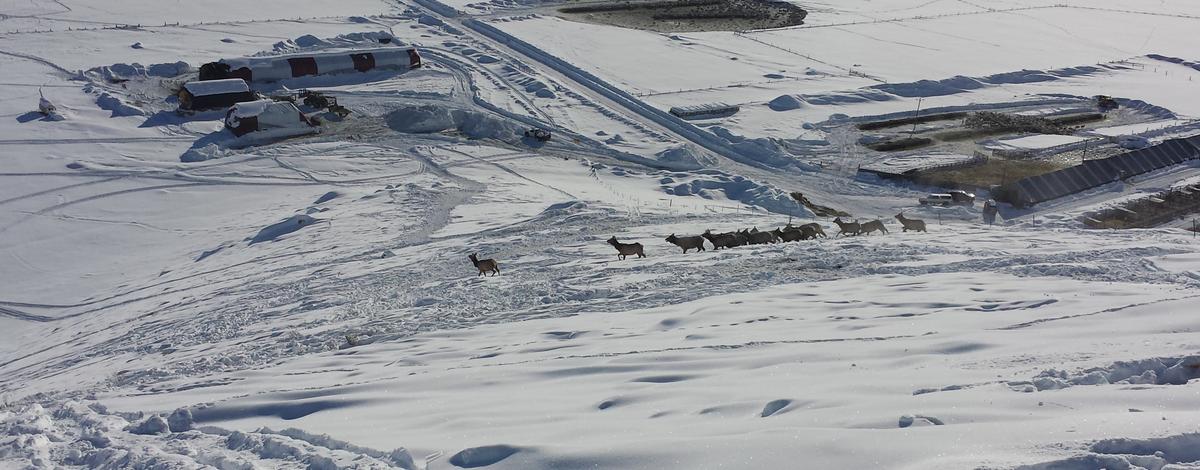
JEROME- Last winter, Mother Nature decided to wrap Idaho in a thick, white coat of snow over much of Idaho and the Rocky Mountain west. The snow started falling early and continued to pile up throughout the winter.
Big game animals that had spent their summer and early fall in the mountains did what they have been doing for eons and migrated to lower elevations. These traditional wintering areas typically have less snow, and have shrubs and grasses preferred by big game that helps sustain them through the winter.
When big game animals arrived at their wintering areas they were greeted with above average snow depths that continued to increase throughout the winter.
The deep snow buried their natural food supplies and animals kept moving as they searched for food. Eventually, thousands of big game animals ended up on private property where they found stored grain and hay, and they decided to stay.
Private lands provide year-round habitat for many species of wildlife and landowners are used to seeing big game animals on their property, and like other Idahoans they enjoy watching wildlife. However, when 300 elk are raising havoc in your front yard the novelty of seeing them can wear pretty thin.
Last winter the number of deer and elk that showed up on private lands impacted daily operations and created financial hardships for farmers and ranchers. Herds of elk and deer were eating stored and standing crops that were intended to be sold or used to feed domestic livestock throughout the winter months.
Deer and elk were also competing directly with domestic livestock for feed that was put out on the ground every day. Property damage to fences and hay stack tarps was a common occurrence.
Idaho Department of Fish and Game worked with landowners to address the wildlife damage issues they were experiencing on their properties. In the Magic Valley Region, landowners in Blaine, Lincoln, Gooding, and Elmore Counties were especially busy dealing with elk and mule deer depredations.
Landowners recognized that Fish and Game was busy responding to numerous wildlife depredations throughout the Magic Valley Region and worked with Fish and Game to resolve elk and mule deer depredations on their properties. Where practical, landowners allowed animals to be moved and fed by Fish and Game at other locations on their property away from their haystacks and where they were not feeding their livestock.
Once winter had passed, deer and elk that found their way to private lands headed back to their summer and early fall ranges. So, the next time you are hiking or hunting in the mountains and see deer and elk, take a minute, and even if the conversation is only in your head, thank a landowner. The animals you’re looking at may have spent the winter on private lands.

